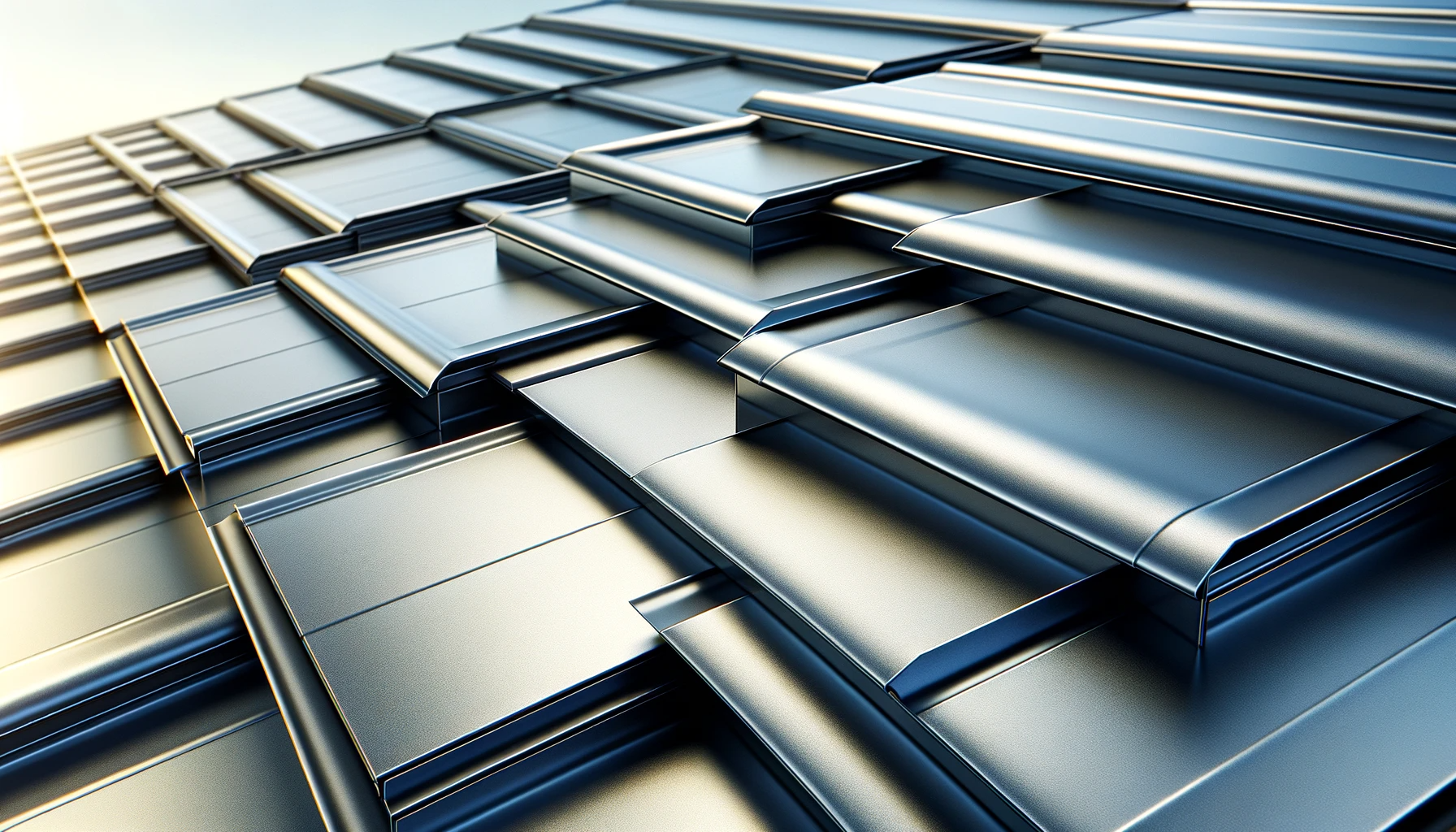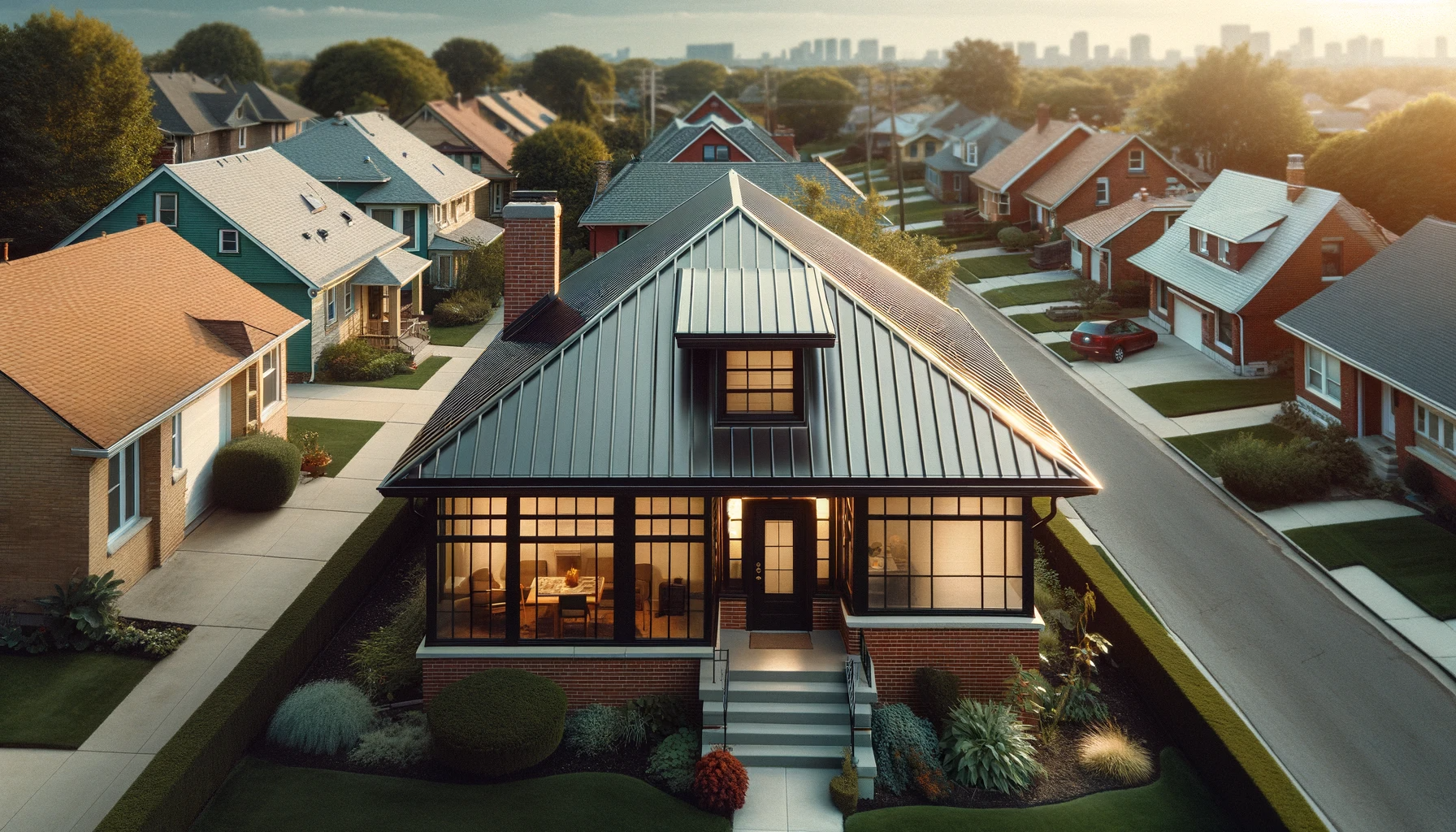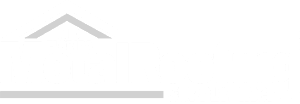The Advantages of Standing Seam Metal Roofing for Homes and Businesses
Metal roofing has become increasingly popular in recent years, offering numerous advantages over other roofing materials such as asphalt shingles, wood shakes, and clay tiles. Among the wide range of metal roofing options available, standing seam metal roofing stands out as a top choice for homes, commercial spaces, and agricultural applications. This blog post will deep dive into the world of standing seam metal roofing, discussing its attributes, benefits, and suitability for various types of buildings.
To begin, let’s define what a standing seam metal roof is. A standing seam metal roof consists of panels with vertical seams running from the ridge of the roof down to the eaves. These panels can be made from various metals, including steel, aluminum, zinc, and copper. The seams are raised or “standing,” offering a distinctive appearance and contributing to the overall strength and durability of the roof.
With that out of the way, let’s delve into the advantages of standing seam metal roofing for homes and businesses.
1. Enhanced Weather Resistance and Durability
One of the most significant advantages of standing seam metal roofing lies in its ability to withstand all types of weather conditions without compromising on durability. In areas prone to heavy rainfall, snow, or hail, standing seam metal roofs can offer unparalleled protection.
The raised seams of a standing seam metal roof not only contribute to its visual appeal but also help to prevent water penetration. The seaming process seals the spaces between panels tightly, ensuring a watertight seal. Additionally, standing seam roofs are designed to shed water effectively, which minimizes the risk of leaks and water damage.
When it comes to wind resistance, a standing seam metal roof outshines other roofing materials. The concealed fasteners used in the installation process strengthen the roof system by reducing the chances of the panels being uplifted during strong winds. As a result, metal roofing is often recommended in hurricane-prone regions.
2. Improved Energy Efficiency and Eco-friendly Attributes
Another compelling reason to opt for standing seam metal roofing is its excellent energy efficiency. Metal roofs possess a natural ability to reflect sunlight, which helps to reduce solar heat gain in your home or business. During hot summer months, this characteristic translates into a cooler interior living space and reduced reliance on air conditioning systems.
Moreover, metal roofing can be coated with special reflective paints that further enhance its ability to minimize heat absorption. These “cool roof” coatings can lead to even more significant energy savings and contribute to the overall efficiency of your property.
In winter months, a standing seam metal roof can serve as a reliable insulator, preventing heat from escaping through the roof and reducing heating costs. This thermal retention capability, combined with the solar reflectivity, makes standing seam metal roofs a highly energy-efficient choice.
A standing seam metal roof also offers environmental advantages. Metal roofing materials are often recyclable, which means that they can be repurposed at the end of their long service life. Additionally, many metal roofing systems utilize recycled materials in their production process. These environmentally friendly credentials make standing seam metal roofs a sustainable choice for eco-conscious homeowners and business owners.
3. Aesthetic Appeal and Versatility in Design
Standing seam metal roofing is known for its sleek and modern lines, which can elevate the curb appeal of any residential or commercial property. The clean appearance of the standing seams creates a visually striking effect, setting it apart from traditional roofing materials such as shingles and tiles.
Metal roofing panels are available in numerous colors and finishes, offering endless possibilities for customization. Property owners can choose a color and finish that complements their building’s overall architectural style or opt for a bold design statement by selecting a contrasting hue.
Furthermore, standing seam metal roofs are compatible with all kinds of property designs and architectural styles. From contemporary homes to historic buildings and even agricultural structures, metal roofing can enhance any space with its eye-catching aesthetics.
4. Ease of Installation and Low Maintenance Requirements
The installation process for a standing seam metal roofing system is relatively straightforward, which can lead to quicker project completion and reduced labor costs. Lightweight materials and pre-fabricated panels require fewer resources to transport and install, making standing seam metal roofing a cost-effective option.
Standing seam metal roofs are also known for their low maintenance requirements. These roofs do not require frequent repairs or replacement due to their excellent durability and resistance to weather-induced wear and tear. Homeowners and business owners can benefit from the reduced upkeep costs and enjoy a hassle-free roofing solution for many decades.
Choosing Standing Seam Metal Roofing for a Long-lasting, Efficient, and Elegant Solution
Standing seam metal roofing offers a superior combination of long-lasting performance, energy efficiency, aesthetic appeal, and ease of maintenance. By selecting this roofing system, you are not only protecting your property from the elements but also enriching your space with a stylish, contemporary design.
With so many benefits attached to standing seam metal roofing, it is no surprise that this type of roof is experiencing a surge in popularity among residential and commercial property owners. If you are considering a new roof or planning to replace an existing one, we highly recommend exploring standing seam metal roofing as a high-quality, sustainable, and visually stunning option. And we also recommend reaching out to us at Mid Florida Metal Roofing Supply, Inc., a reputable metal roofing supplier, to get you exactly what you need!
Share Our Metal Roofing News Articles
Related Posts




